History of the Air Force and Air Defense of Yugoslavia. Part of 9. Wars in the ruins. Bosnia and Herzegovina. Part of 1
Back in October, 1991, the national assembly proclaimed its sovereignty and announced its withdrawal from the SFRY. 29 February 1992 of the year on the recommendation of the European Union was held a referendum on state independence of the republic, which was boycotted by the local Serbs. Immediately after the referendum, an event occurred in the capital of the Republic of Sarajevo, which can be considered as a starting point for the outbreak of war. 1 March 1992 of the year in front of the Orthodox Church masked men shot at a Serbian wedding procession. The groom's father was killed, several people were injured. The attackers disappeared (their identities have not been established so far). Barricades appeared on the streets of the city.
The United States and the EU poured oil on fire by adopting 10 in March 1992, a joint Declaration on the positive consideration of the recognition of the independence of Bosnia and Herzegovina, and within the existing administrative boundaries. Although it was already clear to everyone that a united Bosnia and Herzegovina is no longer out of the question, disengagement according to ethnic principle is the only way to avoid war. However, Muslim leader Aliya Izetbegovic, defending the concept of a single Muslim state, openly admitted that he sacrificed peace for the sake of independence.
4 April 1992, Izetbegovic announced in Sarajevo the mobilization of all policemen and reservists, with the result that Serbian leaders called on the Serbs to leave the city. 6 April 1992 The Republic of Bosnia and Herzegovina, led by Aliya Izetbegovic, was officially recognized by the West. On the same day, armed clashes began in Bosnia between representatives of the main national-religious groups: Croats, Muslims and Serbs. The Serbian response to Muslims and the West was the creation of the Republika Srpska. It happened 7 April 1992, in the village of Pale, near Sarajevo. Very soon, Sarajevo itself was blocked by Serbian armed units.
The events around the JNA garrisons in the republic began to develop according to the scenario already run-in in Slovenia and Croatia. They were immediately blocked, and on April 27 of 1992, the leadership of Bosnia and Herzegovina demanded that the army be withdrawn from Bosnia or transferred to civilian control of the republic. The situation was a dead end and it was possible to resolve it only on 3 in May, when Izetbegovic returning from Portugal was detained by officers of the JNA at the Sarajevo airport. The condition for his release was to ensure the unimpeded release of military units from the blocked barracks. Despite Izetbegovic’s promise, Muslim militants did not observe the agreements reached and JNA columns leaving the republic were fired upon.
Sometimes evacuation turned into a real combat operation. So, April 23 had to attract Mi-8 helicopters and 63 paratroopers of the Airborne Brigade in order to evacuate the personnel from the blocked barracks. In total, 9 Mi-8 participated in the operation (one of them was in reserve) and 16 fighters of the 63 brigade who were to take up positions along the perimeter of the barracks and cover the evacuation. The calculation was made on surprise (in order to avoid information leakage, the surrounded ones reported evacuation just ten minutes before it began) and speed (12 minutes were allotted to the helicopters according to the plan). The risk was very high, so all participants in the operation were volunteers.
However, this venture was a complete success. Helicopters took off simultaneously with the onset of an artillery raid on the positions of Muslim militants besieging the barracks, and with its end were already above the target (the flight time from the home airfield was only 15 minutes). Having landed on the territory of a military camp, the helicopter pilots, under the cover of paratroopers, took on board their "turntables" 170 military and civilians who had been under continuous shelling for more than two weeks in just seven and a half minutes. At the same time, all conceivable passenger capacity records of the Mi-8 were probably broken. So, one of the "eights" took on board the 43 man. Although it was necessary to take off under fire and practically all the vehicles got holes, there were no wounded and dead people on board. All helicopters returned safely to Mostar.
Nevertheless, not without loss.
12 April 1992 over Bosnia was shot down by the MiG-21Р (serial number 261111). Shot down over Bosnia. The pilot ejected and was captured.
23 April 1992 shot down by J-21 Hawk. The pilot ejected and was captured.
24 April 1992 - J-21 Hawk. The pilot ejected and managed to walk back to his base.
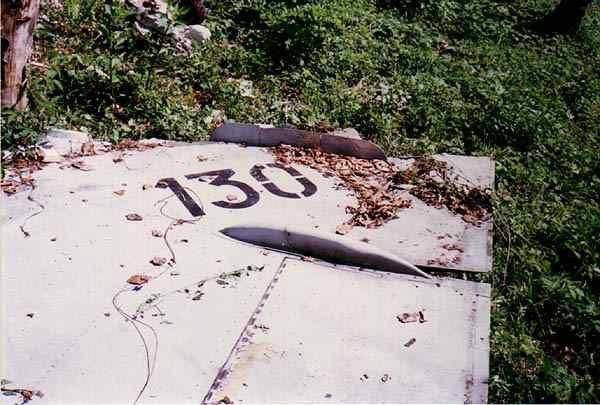
24 April 1992 - G-4 Super Galeb. The pilot ejected and was captured.
2 May 1992 - shot down by a MiG-21bis missile. The pilot went missing (probably did not have time to eject)
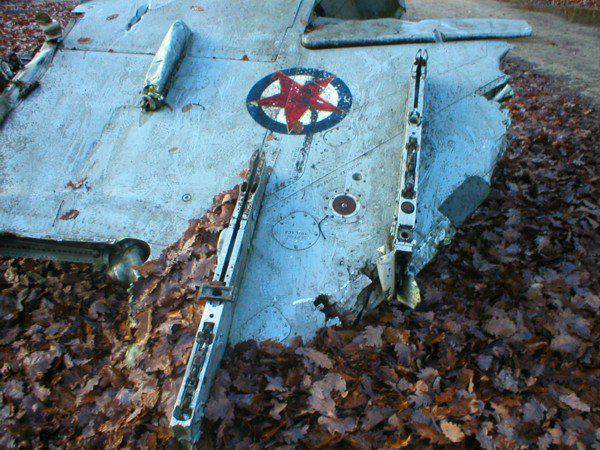
18 May 1992 signed an agreement on the complete withdrawal of the JNA from Bosnia, and on May 20 the Bosnian leadership declared it occupational, which exactly repeated the situation that developed with the Soviet Army in the former Soviet republics. To the credit of the Yugoslavs, it must be said that with all the internal chaos that prevailed in the army, they managed to bring the JNA units into the territory of Serbia and Montenegro, mostly retaining (unlike the former Soviet Union) heavy weapon and military equipment. What could not be evacuated was destroyed on the spot.
So the largest air base of the Yugoslav Air Force in Bosnia Bihac went to Muslims completely destroyed. All equipment was either removed or destroyed. Even the underground hangars of the base located in the Pleisejvica mountain were blown up. As a result, Bosniaks and Croats did not receive more than one combat vehicle. Even most of the Aeroclub light aircraft and gliders were able to overtake on the territory of the Republika Srpska.
Therefore, the army of the Republic of Bosnia and Herzegovina got only a few training aircraft such as UTVA-75, UTVA-66 and Piper PA-18 Super Cab, owned by the flying club in Bihac. They began to be used for courier flights. Later they were joined by the Bosnian-bought transport CASA C-212-200 Aviocar and the former Croatian An-2. Despite the UN black market embargo, the Bosnians were able to acquire 1992-1993 in the winter. several Mi-8 helicopters. All in all, during the war, according to unofficial estimates, Bosnia and Herzegovina was able to acquire 14 Mi-8 / Mi-17 helicopters, eight of which were lost during the fighting. Before 1993, Croatian Mi-8 helicopters worked in the interests of the Bosnians, but hostilities began in 1993 between Bosnian Muslims and Croatian Catholics, which continued until the spring of 1994; only in March of 1994 did the cooperation on helicopter operations between Bosnians and Croats resume.
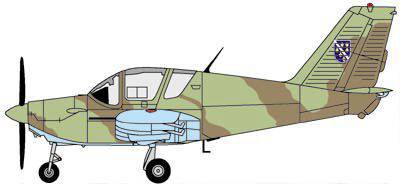
In the Republika Srpska, everything was different: no one destroyed anything, and military equipment and weapons were transferred by inventory. Officially, the Air Force and Air Defense of the Republika Srpska were formed 27 May 1992. On this day, they made 16 sorties, attacking Croatian positions. Total Bosnian Serbs received from JNA 22 J-21 "Јastreb" and G-2 "Galeb" (12 J-21 and 2 NJ-21), 12 J-22 ORAO (10 single J-22 and two double NJ-22) , 27 helicopters "Gazelle", 14 Mi-8, as well as air defense systems, including several dozens of air defense systems С-75М Volkhov and two large air bases (Zalusany and Makhovlyany).
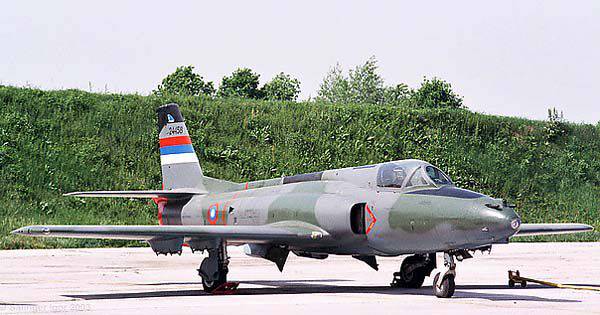
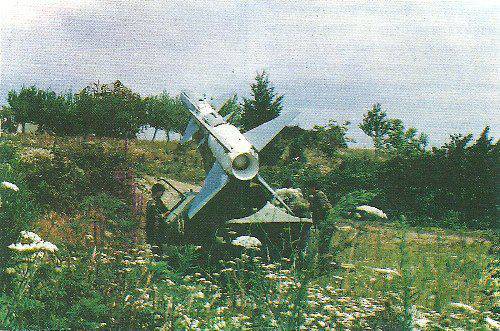
All the pilots and technicians, the natives of these places, were immediately “fired” from the JNA and immediately enlisted in the service of the new Air Force. Personnel, like most of the Air Force of the new Balkan states, did not feel a shortage - Serbs, natives of Bosnia, came from all corners of the former Yugoslavia to Banja Luka. They were commanded by Colonel Zivomir Ninkovich (who received the rank of colonel-general).
The commander of the Bosnian Serb army was the former commander of the 9 Corps of the Yugoslav People’s Army, the talented General Ratko Mladic.
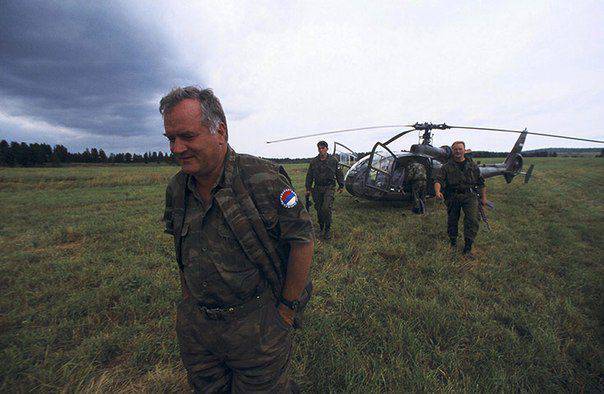
By the middle of March, 2 / 3 of the republic turned out to be in the hands of the Serbs. However, the Serbs could not solve the main strategic task - they could not take Sarajevo. In Bosnia, a situation has arisen in which 17 armed formations fought on a relatively small territory with each other.
In May, 1992, in line for bread, in Sarajevo, a shell exploded, killing 22 people. The West immediately blamed the attack on the Serbs, although the Serbs themselves are still convinced that this was a well-planned provocation. 30 May The UN Security Council announced the introduction of full-scale sanctions against Yugoslavia (Russia was in favor of their introduction).
In June 1992, Croatian Catholics openly got involved in the war on the Muslim side. Croatian troops launched an offensive in two directions. According to some reports, up to 40 thousand soldiers and officers participated in the battles, supported by almost a hundred tanks. To this, the Croatian Air Force has already managed to gain a “fat.” A special secret fund was allocated for the purchase of aircraft and helicopters in circumvention of UN sanctions. , 1990% of the gross national product. Where did the small, newly independent country get such money? One of the many Balkan puzzles ... Germany became the main supplier of weapons and military equipment for Croatia. Even during the Second World War, Croatian Ustas were the closest cooperated with the occupying German forces. In terms of equipment, the Croatian Air Force was second only to the Serbian Air Force, which were the direct successors of the SFRY Air Force. It is hard to believe that the UNPROFOR command or UN commissioners were unaware of such matters. Just the construction of the Croatian Air Force is just one of many policy examples "double standards": UN sanctions against Serbia were very strictly enforced and proved effective. Croatian, "purely peaceful and purely sporting" MiG-1,86 fighters took off and landed in the same lane, h then the UN planes.
When delivering Croats to the Mi-24 helicopters, the appearance of propriety was observed - the weapons were removed, and the “crocodiles” themselves were officially considered to be high-speed ambulance helicopters, for which they drew red crosses on the sides of the fuselage. Mi-Set weapons on "ambulance helicopter" took only a few hours. Croats periodically demonstrated Mi-24 without weapons to foreign observers and journalists. One Mi-24D was improved in the search and rescue option: it installed a winch and dismantled all the weapons. One "crocodile" in 1995 was refined into anti-submarine, after which the helicopter was able to carry four American anti-submarine torpedoes Mk on the outer suspension. 44. Finally, one Mi-24 was equipped with an infrared front hemisphere review system and was used as a scout.
For transportation and in the interests of special forces, the received Mi-8 were actively used.
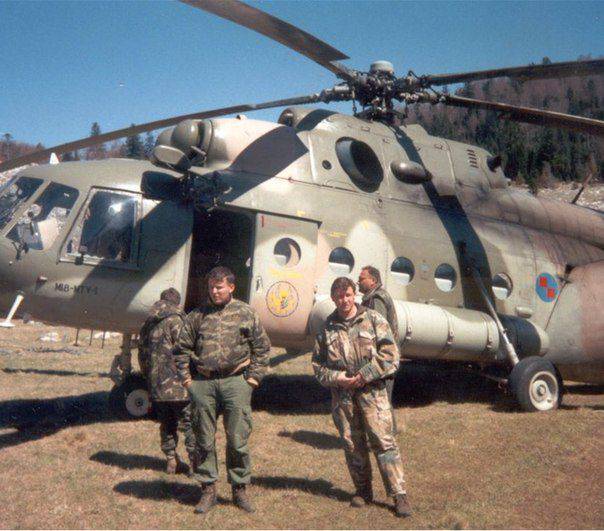
On their own, Croats organized the production of small remotely-piloted reconnaissance aircraft (RPV).
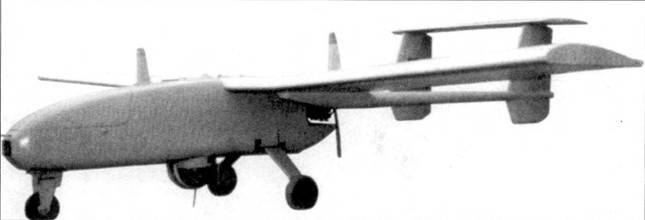
The newly created Croatian air forces began to actively participate in hostilities both in Bosnia and in the territory of the Serbian Krajina. Of course, there were no losses: when landing Mi-8МТВ-1 crashed on the top of Mount Velebit, the crew and the special forces aboard 28 died. On May 21, the Serbs brought down the Mi-8MTV-1, carrying the 19 wounded. 5 August released by Croatian crew, which took the helicopter for Serbian, the MANPADS missile hit the Mi-8MTV-, fortunately for those aboard, the missile did not explode.
24 June 1992 in Prague Serbian ZSU M-53 / 59 "Prague" hit the first Croatian MiG-21bis hijacked by the Croatian pilot JNA 4 February 1992, pilot, Colonel Anton Radosh, died (according to another version, the fighter crashed into the ground in flight at extremely low altitude). The Croats themselves claim that the fighter was shot down by "friendly fire" (MANPADS missile). The pilot ejected, but his fate was not clarified (listed as dead).
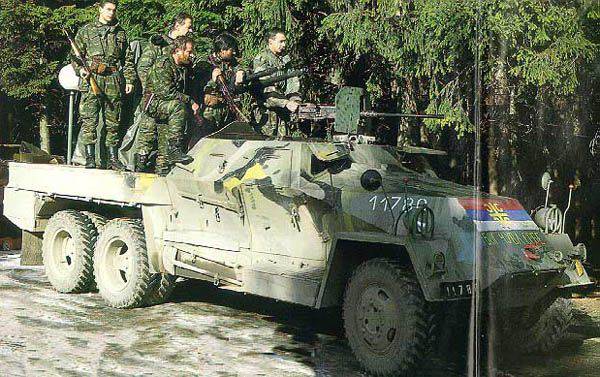
Serbs also quite actively used their Aviation, whose main task was to support their ground forces. “Orao” and “Hawks” attacked the advancing Croatian units. Among the successes of Serbian pilots (the load, by the way, was quite intense, up to five sorties per day), the destruction of the strategically important bridge in the Slavonsky Brod area was used (the UR AGM-65B Mayverik was used). In addition to guided weapons, 500-kg bombs, 57-mm and 128-mm NURS bombs and the British BL-755 cluster bombs were also used. In total, during the battles of the Air Force of the Republika Srpska, 870 sorties were completed. Very little is known about the losses: only two J-22 “Orao” and “Spark” NJ-21 “Hawk” can be entered into the number of those killed with confidence, and the “Orao” was also lost, allegedly lost as a result of “friendly fire”. In both cases, the pilots failed to escape. Moreover, in the downed "Hawk", in addition to the pilot, the technician also died, asking for a sortie. In general, such small losses can be attributed to the experience of Serbian pilots: taught by Croatia, they never made more than two hits on the target.

Helicopters were actively used: "Gazelle" ATGM "Baby" destroyed several tanks.
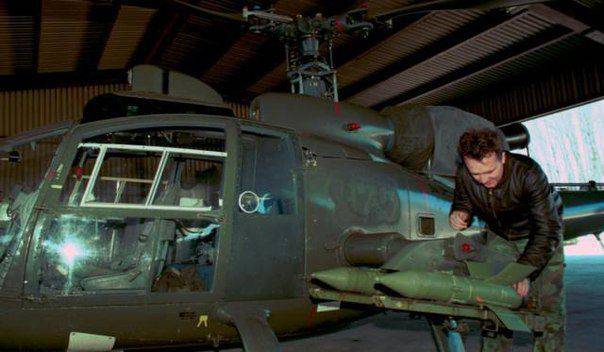
With the help of Mi-8, more than 600 injured soldiers and civilians were saved.
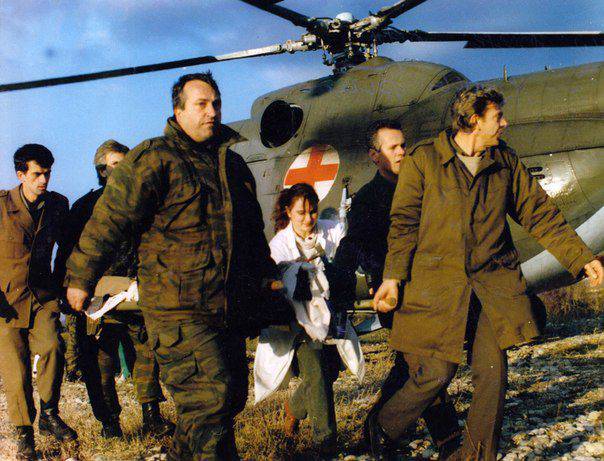
On the day there were three flights to Belgrade. In order not to be knocked down by the enemy’s air defense, they flew near the ground, below the power lines wires. With the Mi-8 (to facilitate the helicopter) they usually removed the doors of the cargo hatch, and improvised armor was placed on the floor of the cockpit. The pilots joked about the weak security of the G8 cockpit: "The motors are powerful, and everything else is like a tin bucket, so when firing it is better to sit on the helmet, and not to wear it on your head." They were armed with the M84 “Shkorpion” machine guns (Yugoslavian vz. 61) and the M70 assault rifles (AKM of the Yugoslav production), the latter took with them, according to the experience of their fellow JNA colleagues, in case of a forced landing for a fight not for life, but for death . Serbian helicopter pilots did not forget the fate of the crew of a damaged Croatian air defense that was ambushed. Mi-8 fell on the territory of Bosnia and Herzegovina, however, the Croats crossed the border of the neighboring republic and captured the crew. Helicopter pilots were tortured and then beheaded.
On July 3, Bosnian Croats proclaimed the Herceg-Bosna Republic in Gruda, which was an unpleasant surprise for Muslims. At the head of the new education was Mate Boban. But under the threat of international sanctions and the entry into the war of Belgrade, Croatian President Tudjman withdrew his troops from Bosnia. This took advantage of the Serbs, having beaten off part of the previously lost territories.
According to the results of the first battles of the Air Force of the Republic of Srpska were reorganized. All flight units were consolidated into the 92 4th mixed aviation brigade. The brigade included two fighter-bomber squadrons and a mixed helicopter squadron.
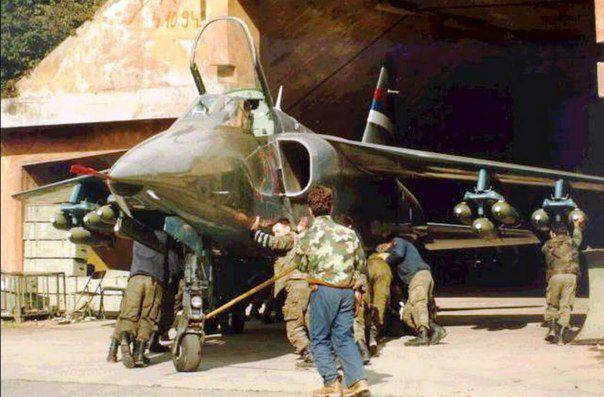
Aero Club "Cessna-172", "Zlin" Z.526, "Pipers" PA-18-150, "Wilga" PZL-80, together with the military UTVA-66 and UTVA-75, made up the 92-s light multipurpose squadron squadron squadron
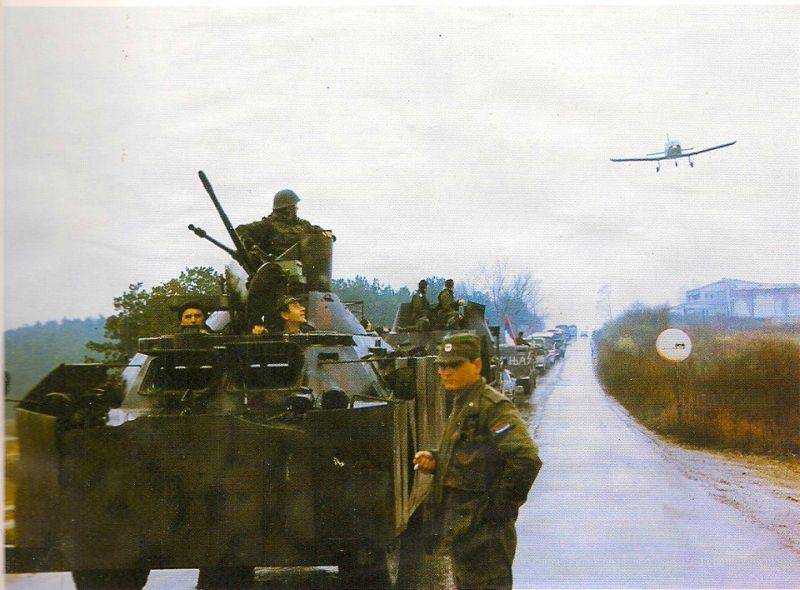
The air defense forces consisted of a missile brigade, a light artillery and missile brigade and a radio engineering battalion. They were armed with the C-75 Dvina and Volkhov, short-range mobile complexes 9K31 Strela-1 and 9K35M Strela-10, as well as 40-mm towed L70 guns Beforfors; 30-mm ZSU. Later the 20 th self-propelled missile regiment entered the force. Its mobile 172K2 “Kvadrat” air defense system protected Serb units operating in the Sarajevo area from air strikes.
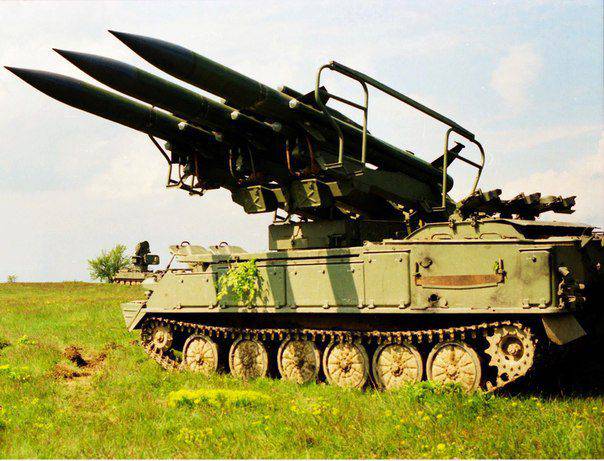
However, the ZRK’s calculations didn’t have much to do, Croatian airplanes appeared in the air extremely rarely, and the aircraft of the army of the Republic of Bosnia and Herzegovina did not show any activity at all, then the anti-aircraft gunners did not have enough work. Owing to their rate of fire, anti-aircraft guns were actively used to destroy infantry and light fortifications, especially the Prague M-53 / 59 ZSU with its two 30-mm guns. Cases have repeatedly been noted that even her first shots with the characteristic doo-doo-doo were enough to stop the enemy’s attack.
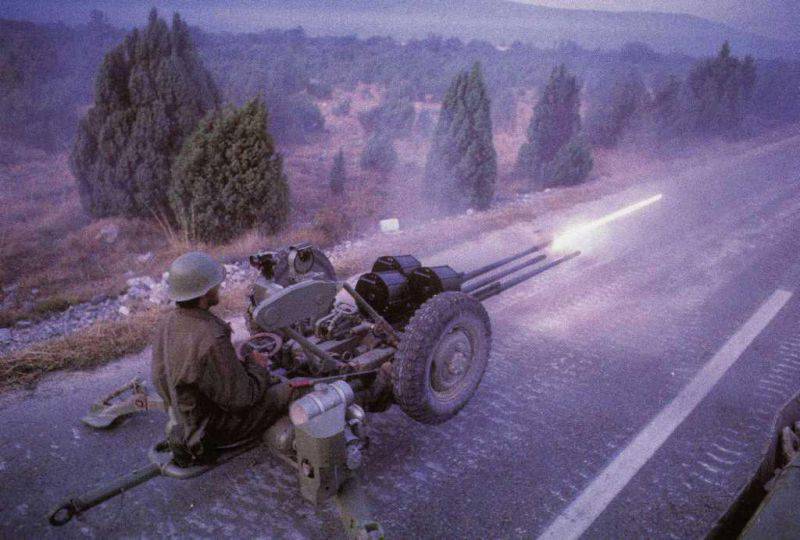
At the beginning of 1992 of the year, in accordance with Resolution No. 743 of the UN Security Council, an 14-thousand contingent of "blue helmets" was sent to Bosnia. Their mission was purely observant, and their presence was often simply ignored by the warring parties. In mid-July, NATO intervened in the matter: warships appeared in the Adriatic that supported the naval blockade of Yugoslavia. The demonstration of force was obvious, and the Serbs signed another peace agreement (which, however, lasted only a month).
The next NATO action was the organization of an air bridge in the Serb-blocked Sarajevo. To this end, Canadians landed at the local airfield (who were soon replaced by the French). They were supposed to ensure the safety of dozens of American, Belgian, British, Canadian, German, Greek, Italian, Saudi and Turkish transport workers who began to perform regular flights with humanitarian aid. Often, along with the "humanitarian aid" on board were both military cargo and weapons for Muslims. Therefore, it is natural that very soon the “transport workers” began to be perceived by the Serbs as aerial targets and were regularly fired upon by them. This was facilitated by the fact that the Sarajevo airport is surrounded on three sides by mountains, so the takeoff and landing glides pass directly over the city.
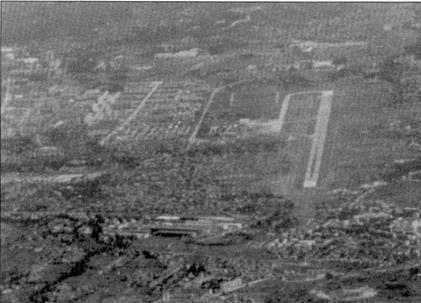
3 September 1992 was hit by an Italian G.222 transport plane while approaching an airport by a MANPADS missile, all crew member 4 died. The perpetrators of the tragedy have not yet been found, since the shelling occurred over the area in which three groups acted at once. After the incident, the "air bridge" was quickly covered. True, not for long. Under the pressure of Americans, the 3 of October flights continued. But since then, over the next three years, almost exclusively American, British and Canadian aircraft have landed. In total, before the end of the operation in January 1996, the 270 aircraft completed the 12951 departure. Of these, 50 aircraft received fire damage from the ground. In addition to the already-mentioned Italian G.222, only one IL-76TD of the Belarusian airline Belair was lost on flights to Sarajevo, which rolled out of the runway, which, despite working engines and equipment, was immediately abandoned for safety reasons as the airfield was shot by Serbian snipers.
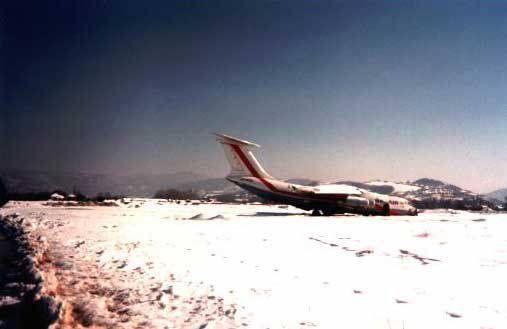
NATO efforts, coupled with the United Nations and the European Union, did not lead to peace in Bosnia. Moreover, at the end of 1992, fighting resumed in the area of Muslim enclaves in the eastern part of the country. The UN decided to organize the delivery to these areas of food, medicine and other basic necessities.
From February 28 on the personal instructions of US President Bill Clinton to the air bridge to Eastern Bosnia, the American Air Force C-1993E connected to 130. All loads were dropped with parachutes, and only at night. In this operation, called the delivery method "Parachute", 44 American "Hercules" were involved. The Europeans did not stand aside; the French and German Transall C-160 were noted above the enclaves. The main cargo was standard food rations of the American army. The last flight to the Muslim enclaves was made in August 1994 of the year, after which the flights were stopped there due to the increased activity of the Bosnian Serb air defenses. At that time, 2828 departure was made.
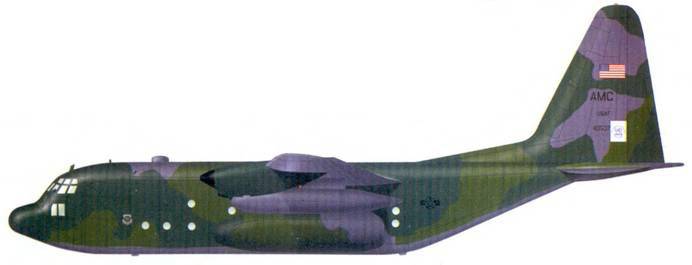
The conflict around Srebnica was resolved as early as April 1993, after the UN declared the area a demilitarized zone and Canadian peacekeepers entered it. From the air they were supported by the French “Pumas” and the British “Sea Kingas” N.S. 4.
October 9 1992 of the United Nations declared the airspace of Bosnia banned for flying any military aircraft of the warring parties. However, the Serbs immediately transferred part of their aviation airfields, which were under the control of the Army of Serbian Krajina and did not fall into the no-fly zone. Krajina Serbs, by that time had already begun to create their own army, in order to resist the Croats, who did not conceal the fact that they wanted to pay them back. Total Serbian Krajina Air Force totaled £ 2-22 ORAO, 2 G-2 "Galeb", 12-21 Јastreb J, J-20 "Chaps" Utva 66 and one AN-2, 18 and helicopters "Gazelle" and Mi- 8. An-2 became famous for especially frequent violations of the "no-fly zone", making regular flights to the Bosnian Serb troops
It was created and its own air defense system of the C-75 "Dvina, 2K12" Square "," Strela-1М ", Strela-2М MANPADS and anti-aircraft guns, as well as such very exotic" anti-aircraft systems "with UR" air-air "P -73 based on the standard Yugoslav army truck TAM-150 under the designation "Tsitsiban".
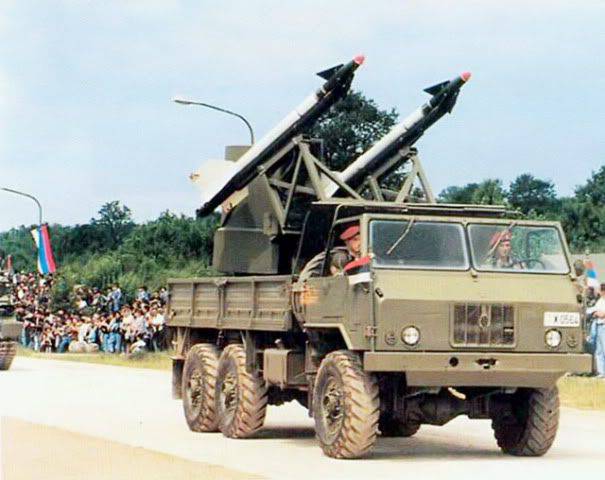
It bore fruit. September 14 The 1993 of the Kvadrat air defense missile system was shot down by a Croatian MiG-21bis, which NATO was looking at through combat missions. The pilot died.

The crew of the NATO-E-3A NATO AWS aircraft, which patrolled over the Adriatic and Hungary, were called upon to monitor the implementation of this UN decision. To ensure continuous duty, their total number was increased to six units. In addition to them, aerial reconnaissance conducted RC-135, U-2 and P-3 Air Force and US Navy. Radio intelligence was carried out by American aircraft EF-111A and EA-6B, based in Italy.
In Bosnia itself, the fighting did not stop. 17 July 1992 was shot down by a Serbian Mi-8. A helicopter with a crew of three was to pick up the wounded from the village of Pelagichevo. The width of the air corridor along the flight route was only 1,5 km. The young crew (the oldest was 26 years) departed from the route, as a result, the helicopter was over the village occupied by Croatian troops, who immediately opened fire on the G-8, which was shot down.
2 August 1992, after the signing of the truce, the Serbian Mi-2T was shot down by an ambush of Muslims from the mountain from Strela-8М. with red cross identification marks flying by air corridor. Nine people were killed on board, including a woman and two young children. The helicopter took a return flight to Banja Luka from Belgrade (the crew brought one wounded man to the Military Medical Academy there) and took the children returning from the hospital.
The cessation of supplies from Yugoslavia hit the Bosnian Serb army aviation painfully. Due to the lack of spare parts, many planes were shackled to the ground, the accident rate increased, so J-1993 and two NJ-1995 were lost in 22 to 22 disasters. However, 18 November 1993. Two Serbian attack aircraft J-22 "Orao" made 48-kilometer flight at ultra low altitude, remaining unnoticed for the Sentry E-3 "Sentry" and BRLS of NATO patrol fighters, then blew up Bosnian NATO fighters, and then bombed Bosnian positions. Bihacha
At the end of 1993, the first unit of unmanned aerial vehicles GNAT-750 from General Atomics, called Thayer-1, was transferred from the USA to Albania. The unit initially included three unmanned vehicles, a mobile control and information processing station, and a ground-based satellite communications module. First flight "drone" from the territory of Albania took place on February 1, 1994. With the help of these devices (used by the US Central Intelligence Agency), information was obtained on the location of armored units, artillery positions and air defense systems of the Serbs, and the passage of UN convoys was also controlled.
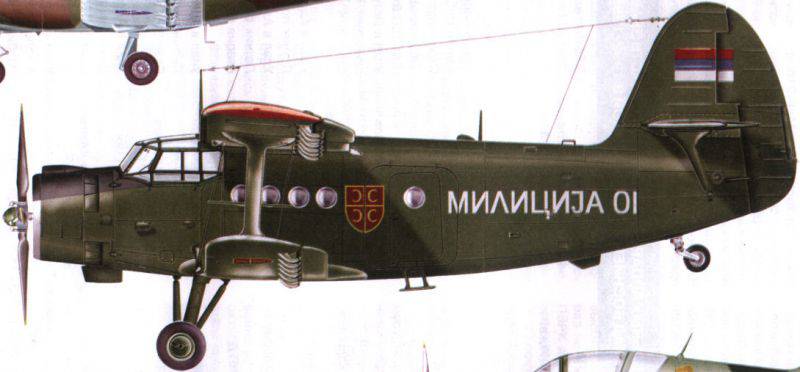
Information